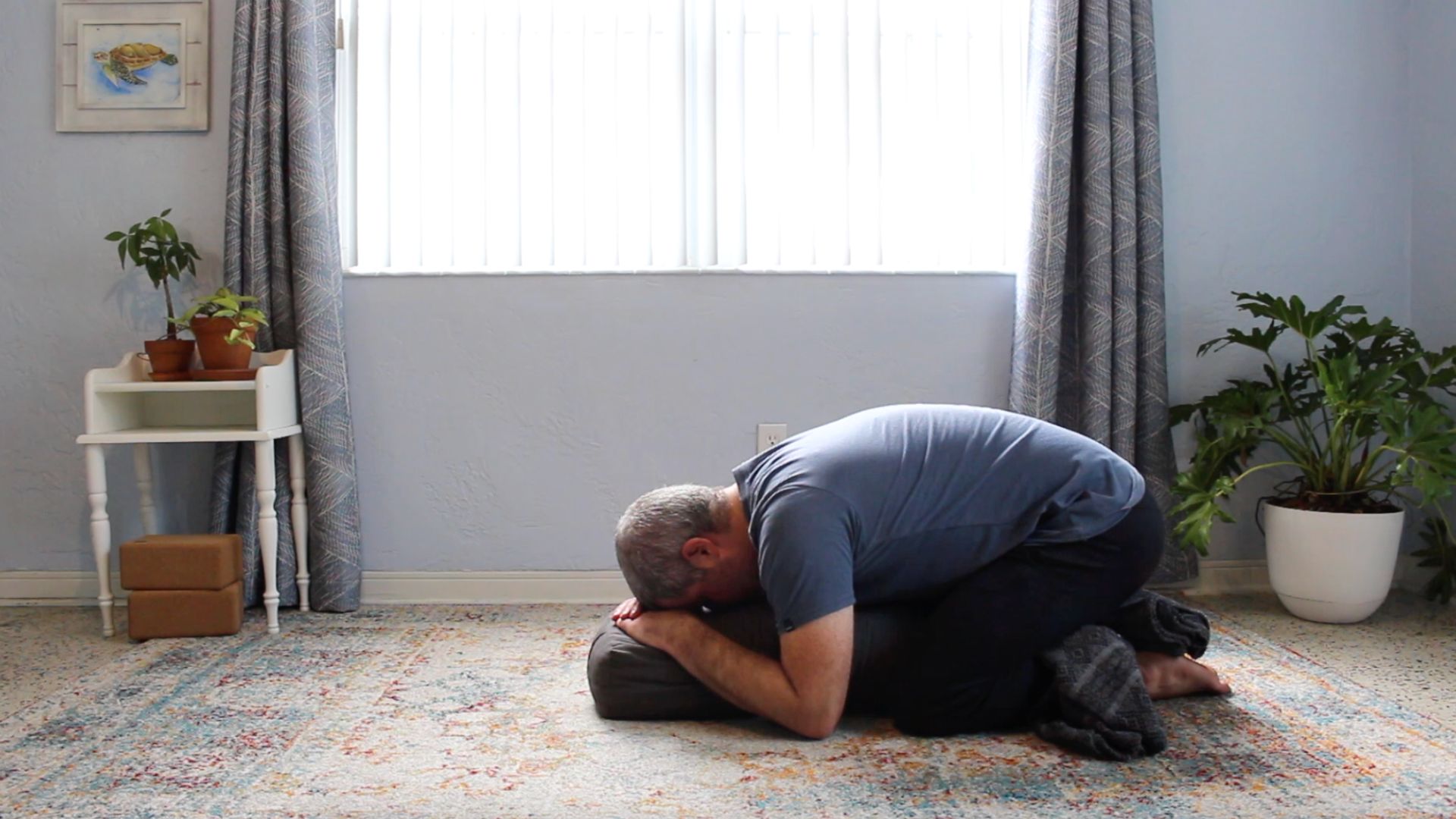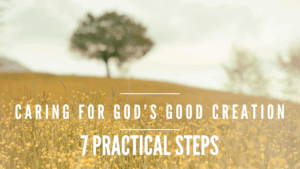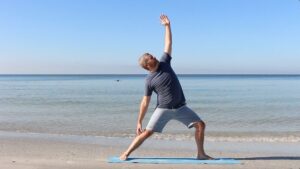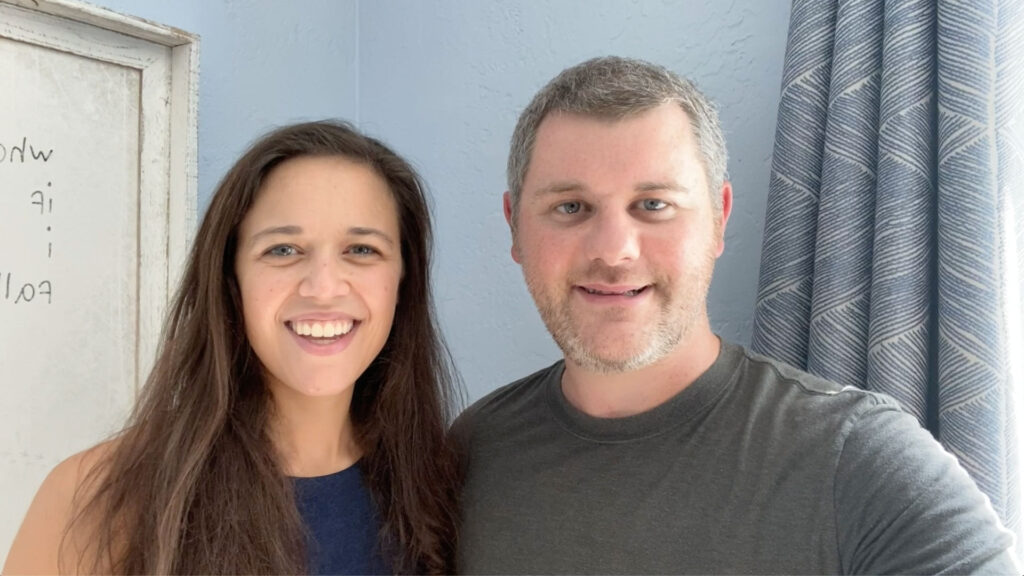Sometimes it’s not time to open.
Sometimes, it’s time to feel. To honor the pain, grief, and dark times.
We talk a lot about heart openers in yoga, and for good reason. There’s something beautiful about expanding the chest, lifting the gaze, and physically stepping into openness. But if we only talk about opening, we risk bypassing something essential: the ache we carry in our hearts. The heaviness that makes openness feel impossible. The pain that needs honoring before healing can begin.
I believe Christian yoga makes space for all of it, not just the joy and gratitude, but the sorrow, the confusion, the hurt. Because if we truly believe that God wants to meet us on the mat, then we have to believe God wants to meet us in our grief too.
We Grieve, but Not Without Hope
Paul writes in 1 Thessalonians 4:13, “We do not want you to be uninformed… about those who have died, so that you may not grieve as others do who have no hope” (NIV). He doesn’t say not to grieve. He says we grieve differently, anchored in the hope of resurrection.
But we still grieve.
We still cry.
We still feel.
Loss is part of being human. Whether it’s the loss of a loved one, the shattering of a dream, a friendship that changed, or a season of life we wish hadn’t ended, our hearts carry stories. And when they’re too full, or too heavy, or too raw, we need a way to release. Not to fix, not to rush through, but to tend gently. To show up honestly. To feel what we feel with God beside us.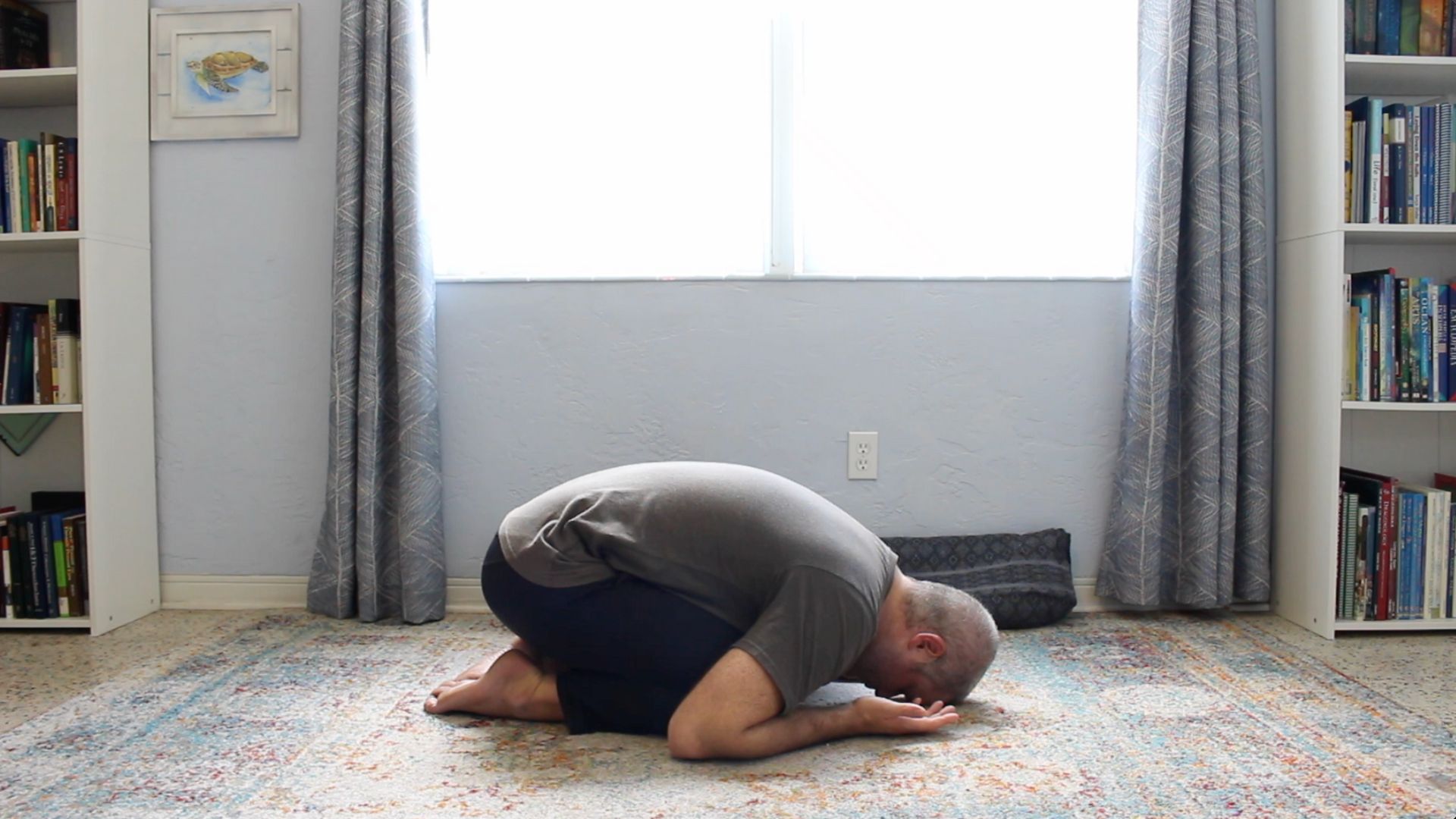
Your Body Knows
Something I’ve come to learn through years of practice and teaching is this: the body remembers. And it also speaks. Sometimes our heart is trying to get our attention, and it shows up as tightness in the chest, a lump in the throat, a hollow in the belly. Our mind may be working hard to keep going, to stay busy, to avoid, but the body says, “Wait. There’s something here.”
And we need to listen.
That’s where heart-closing postures come in.
Not because we want to stay closed off forever, but because sometimes the most faithful, healing thing we can do is to protect what’s tender. To bring it in. To offer it to God without needing to change it just yet.
These Postures Can Help
When I’m in a season of heaviness or loss, or when something unexpectedly stirs up pain I haven’t processed yet, there are a few postures I come back to again and again:
- Child’s Posture – forehead to the ground, arms resting forward or by the sides. It’s a posture of surrender, of humility, of letting go. It’s also a posture that mirrors deep trust—like a child resting in the presence of a parent.
- Supported Forward Fold in Butterfly (with props) – seated with feet together and knees gently falling to the sides, folding forward over a bolster or pillow stack with arms tucked in. This is a gentle, inward posture. It encourages reflection, protection, and quiet presence with whatever is surfacing. I like to imagine wrapping my arms around the bolster as a way of holding my own heart with care.
- Humble Warrior – active but low to the ground, with the chest lowered toward the inner thigh, arms extended behind or tucked in close. It’s a beautiful posture that reflects inner strength and outer surrender. It invites us to come low before God, to protect the heart, and to let our body echo what’s happening in the soul.
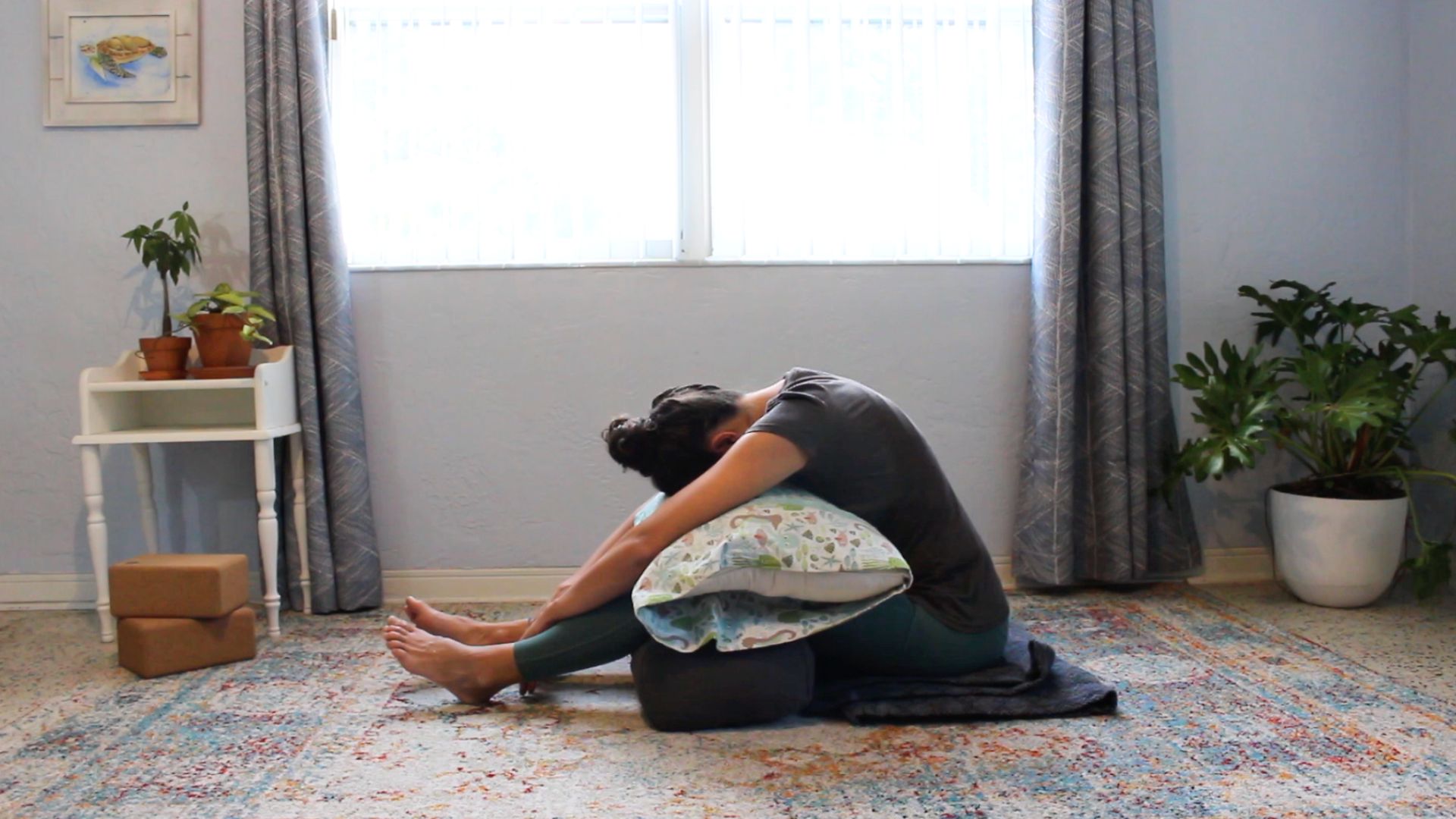
These are not flashy or outwardly expansive. They don’t push us. They hold us. And in doing so, they make space for tears. For silence. For breath. For grace.
Tending Instead of Fixing
One of the biggest lies our culture tells us is that we have to fix everything right away. That pain is something to push through or numb. That healing should be quick and linear. But that’s not how real healing usually works.
In Psalm 56:8, the psalmist says, “You have kept count of my tossings; put my tears in your bottle. Are they not in your record?” (NIV). God doesn’t ignore our pain—He collects it. He honors it. He keeps count. That image alone has brought me comfort so many times.
So when we’re hurting, we don’t have to force ourselves into postures of openness. Sometimes, the most faithful thing we can do is let our body match our heart. To fold in. To bring it all to God, not in tidy packages, but in raw, unfiltered truth.
When You’re Ready, You Can Open
It’s important to say this too: we don’t stay in these postures forever.
They’re not the end. They’re part of the journey.
Eventually, when it’s time, you may find yourself ready to try something more open. Maybe Supported Fish. Maybe a simple backbend. But it will come from a place of authenticity instead of pressure. Not expectation. But a gentle nudge from the Spirit that says, “It’s time.”
The movement from heart-closing to heart-opening is not forced. It’s breathed. It’s prayed. It’s led by grace.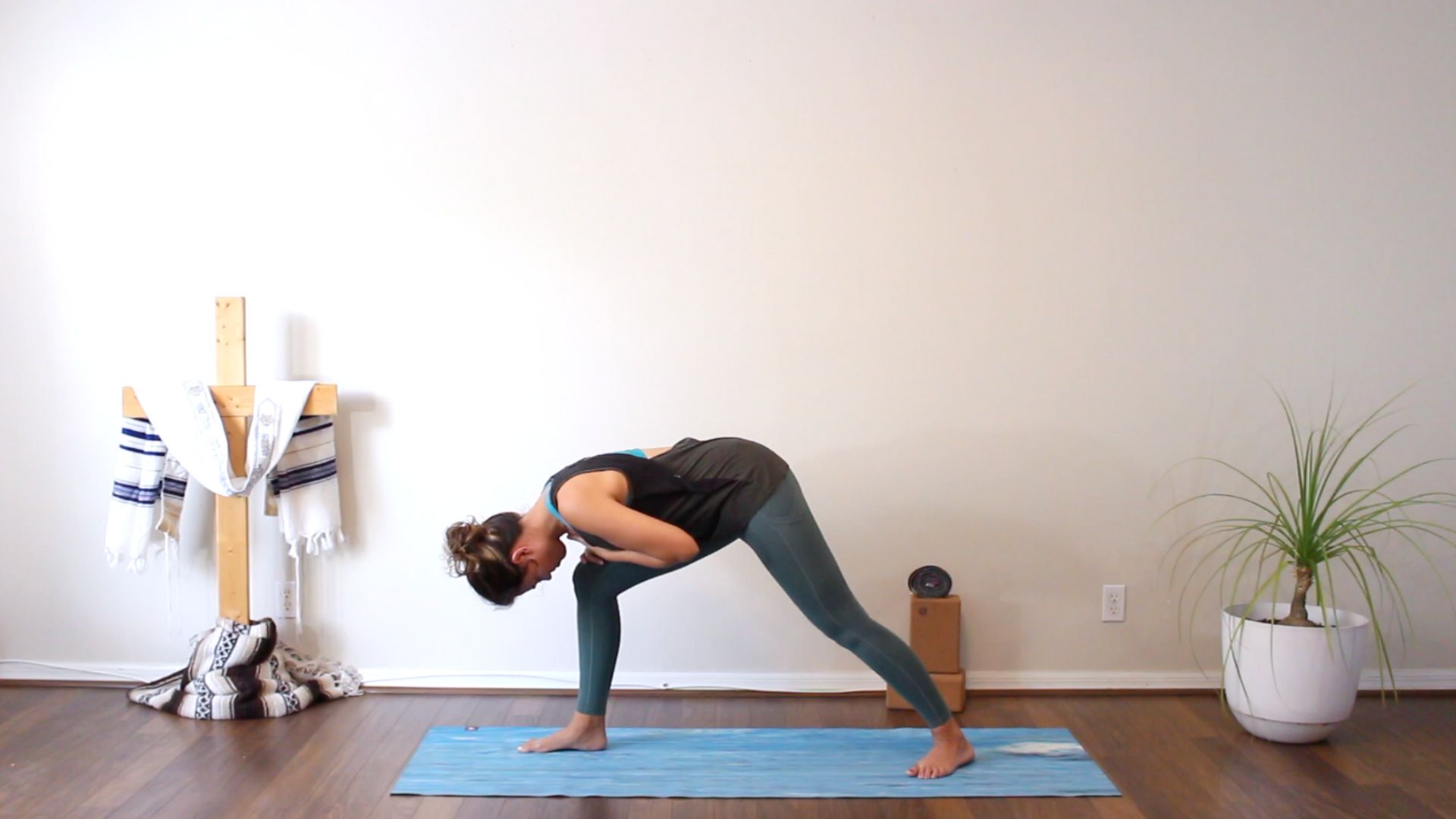
God Meets Us in the Valley
We live in a world full of quick fixes and easy distractions. When we hurt, it’s easy to numb through scrolling, shopping, overworking, overthinking. But God doesn’t invite us to escape the valley. God invites us to walk through it with Him.
Christian yoga gives us a way to do that. To not just think about our pain, but to feel it. To show up with our whole selves in body, mind, and spirit and say, “Here I am, God. This is where I’m at today.”
And the incredible thing is: God meets us there.
In the folded posture.
In the hidden tears.
In the slow, shaky breath.
An Invitation
If you’re in a tender season, I want you to know you’re not alone.
You don’t have to be okay to show up on your mat.
You don’t have to feel strong to pray.
You just have to come.
Let your body lead the way. Let the tears come if they need to. Let the grief speak. Let the quiet be enough. God isn’t afraid of any of it. And God’s not in a rush. You may not know how this will bring you to healing, but show up anyway and see what God might do.
Eventually, openness will come again.
But first, we tend.
We feel.
We fold inward.
And even here, we are not alone.
